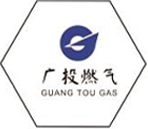
Nov . 24, 2024 00:36
Back to list
gas pressure regulator valve
Understanding Gas Pressure Regulator Valves A Comprehensive Overview
Gas pressure regulator valves play a crucial role in various applications, from industrial settings to residential heating systems. These devices maintain the pressure of a gas, ensuring that it remains within specified limits. By doing so, they protect equipment, enhance performance, and contribute to safety.
What is a Gas Pressure Regulator Valve?
A gas pressure regulator valve is a mechanical device that adjusts the pressure of gas flowing through a system. It ensures that the downstream pressure remains at a desired setpoint, regardless of fluctuations in the upstream supply pressure or the flow rate. By effectively controlling the pressure, these regulators prevent potential damage from excessive pressure, which can lead to leaks, equipment failure, or even hazardous situations.
How Does It Work?
The operation of a gas pressure regulator valve is based on several key components the inlet, outlet, diaphragm, spring, and adjustment screw. The inlet allows gas to enter, while the outlet directs the regulated gas to the downstream application.
When high-pressure gas enters the regulator, it exerts force on a diaphragm connected to a spring. The tension of the spring can be adjusted using an adjustment screw, setting the desired pressure level. As gas flows through the system, the diaphragm moves in response to changes in pressure. If the downstream pressure rises above the setpoint, the diaphragm moves to close the valve partially, restricting gas flow until the pressure falls back to the desired level. Conversely, if the pressure drops too low, the diaphragm opens the valve wider to increase flow and raise the pressure.
Types of Gas Pressure Regulator Valves
There are various types of gas pressure regulators designed for specific applications
. The main categories include1. Single-Stage Regulators Typically used for low-pressure applications where only minor fluctuations in pressure are expected. They are simpler and less expensive but may not provide a stable pressure under varying supply conditions.
gas pressure regulator valve

2. Two-Stage Regulators More common in residential and industrial applications, these regulators feature two stages of pressure reduction, offering improved stability and performance. The first stage reduces the pressure from the supply line to an intermediate level, while the second stage reduces it to the desired output pressure.
3. Automatic vs. Manual Regulators Automatic regulators adjust pressure without human intervention, making them ideal for systems requiring consistent performance. Manual regulators, on the other hand, rely on operators to adjust settings, making them more suitable for situations where variable pressures are acceptable.
Applications of Gas Pressure Regulators
Gas pressure regulator valves are widely used in various industries, including
- Natural Gas Distribution In residential and commercial applications, regulators control the pressure of natural gas that powers stoves, heaters, and other appliances.
- Industrial Processes Many manufacturing processes rely on precise gas pressure control for equipment such as burners, kilns, and reactors.
- Welding and Cutting Operations Regulators ensure that gases like oxygen and acetylene are delivered at safe and efficient pressures for various welding methods.
- Scientific Research In laboratories, regulators are essential for delivering gases for experiments at required pressures without risking safety or damaging sensitive equipment.
Conclusion
Gas pressure regulator valves are fundamental components in gas management systems across numerous sectors. They provide safety, efficiency, and reliability by maintaining controlled pressures, ultimately contributing to the smooth operation of many applications. Understanding how these devices function and recognizing their importance can help industries optimize their processes while adhering to safety regulations. Whether in a home setting or an industrial environment, the significance of reliable gas pressure regulation cannot be overstated.
Next:
Latest news
-
Safety Valve Spring-Loaded Design Overpressure ProtectionNewsJul.25,2025
-
Precision Voltage Regulator AC5 Accuracy Grade PerformanceNewsJul.25,2025
-
Natural Gas Pressure Regulating Skid Industrial Pipeline ApplicationsNewsJul.25,2025
-
Natural Gas Filter Stainless Steel Mesh Element DesignNewsJul.25,2025
-
Gas Pressure Regulator Valve Direct-Acting Spring-Loaded DesignNewsJul.25,2025
-
Decompression Equipment Multi-Stage Heat Exchange System DesignNewsJul.25,2025

